Heating temperature controller - we make the heating system
An ideal heating system should be flexible, that is, allow the temperature of individual radiators to be regulated. In some cases, this will not only save money, but also create a more comfortable microclimate in the house. In principle, any heating system can be made more flexible, for this you only need to install temperature controllers.
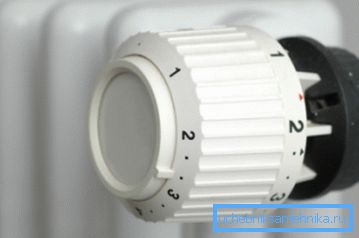
Types of temperature controllers
Temperature controllers for radiators can be classified according to several criteria.
For example, according to the method of controlling the process of thermal regulation, you can select:
- handheld devices - in this case, in order to reduce the temperature of the radiator, you will have to manually slightly close the valve, thereby reducing the diameter of the hole in the heat transfer fluid pipe. Of course, a degree scale is applied on such a regulator so that a person can at least approximately orient himself, by how many degrees the temperature will change, but in this case it is not necessary to speak about accuracy;
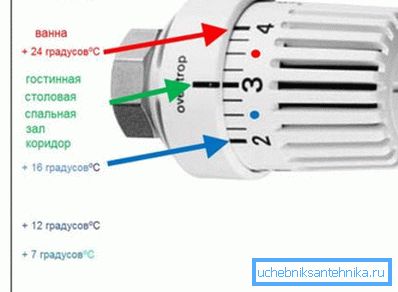
- automatic - The principle of operation of such devices is discussed below. The property of a liquid (or gas) is used to change the volume when heated-cooled. Human involvement in this case is not required. The accuracy is much higher than the models with manual control;
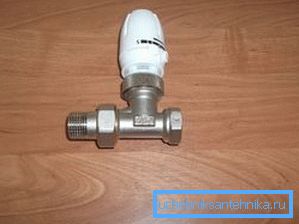
- Separately worth noting electronic regulators. Such devices can not only monitor the coolant current through the heating system using temperature sensors for heating, but also regulate the operation of the boiler itself, that is, lower the temperature of the coolant in the system as a whole. In terms of energy savings, this is the best option.
You can also give a classification of regulators depending on what temperature is used to adjust the heating of housing.
Temperature controllers can use:
- readings of sensors that monitor the temperature outside;
Note! This approach to adjusting the heating operation allows you to immediately respond to changing weather conditions. For example, if the frost has increased, the device will immediately increase the flow of coolant into the radiator, without waiting for the temperature in the room to drop;
- a temperature sensor for heating can monitor the temperature inside the room;
Note! In this case, it is extremely important to locate the thermostat successfully, it is not recommended to close it with curtains and place it in a deaf place where air stagnates. This will lead to malfunction of the heating.
- The temperature of the coolant itself can also be monitored, but such models should be considered last. They are characterized by low precision temperature control (within 2-7? C).
More information about the operation, design and installation of the thermostat
In order to choose the optimal temperature controller for a heating battery, it is necessary at least in general terms to represent the principle of operation of this device and to have an idea of its main components. The overwhelming majority of devices of this kind are produced of an automatic type, so it is their design that is the main focus.
Device and principle of operation
The main element of almost any automatic temperature controller is a bellows filled with either liquid or gas. Externally, the bellows resembles the usual hollow cylinder in which the liquid / gas is placed. Such devices have an optimal price / performance ratio.
Note! The accuracy of adjustment for both gas and liquid devices is comparable, only the reaction rate to changes in temperature differs. Gas-filled devices react much faster, and liquid ones will change the temperature of the radiator with some delay.
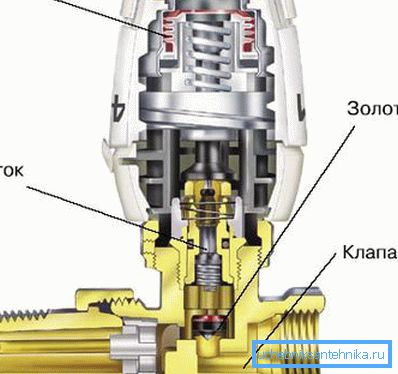
As the temperature changes, the volume of liquid / gas in the bellows changes. This entails a lengthening of the thermal bulb and a reduction in the flow area of the supply pipe. As a result, a smaller volume of coolant per unit of time gets into the radiator, respectively, and the temperature in the room drops.
Preparation of a temperature regulator for work
It sounds somewhat ridiculous, but the radiator temperature controller of the radiators also needs adjustment - this is necessary so that its readings correspond to the real temperature in the room.
Note! Only regulators, which are supplied without an electronic control unit, need adjustment. It is much easier to work with electronics - you only need to set the desired temperature on the display. All the rest "smart thermostat" will do it yourself.
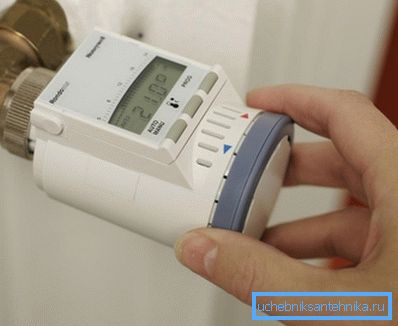
Instructions for setting up something like this:
- you must first ensure maximum hot water supply to the radiator. To do this, the control valve must be turned to the extreme left position. In parallel with this, the temperature in the room should be measured (in the place where there is definitely no influence of drafts);
Note! Before starting the adjustment, it is necessary to close all doors, windows and in general to seal the room to the maximum.
- when the temperature in the room significantly increases (approximately 7? C above the required value), the head will need to be turned to the extreme right position - that is, completely shut off the coolant supply to the radiator;
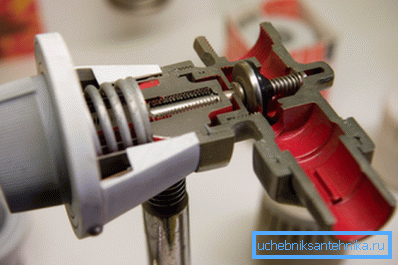
- the temperature will begin to fall, and here it is very important to catch the moment when it reaches the desired value. At the same time, you need to slowly turn the regulator head to the left, after its body becomes warm and you hear the sound of water entering the radiator, the setting can be considered complete.
About the location and installation of the thermostat
Heating temperature regulators can be installed in any heating system. It is only important that there is normal air circulation at the installation site. However, if the battery is placed in a niche, then models with a remote sensor that is placed at a distance of several meters can be used.
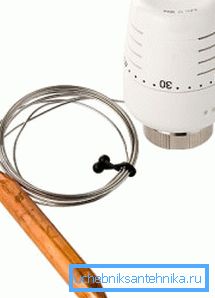
Also during installation it is recommended to adhere to the following rules:
- if the house heating system is one-pipe, that is, all radiators are connected in series, then it is simply pointless to install a thermostat in front of each of them. For adjustment, one placed before the first battery is enough;
- since the device regulates the flow of coolant, then you need to install it only on the supply line, if you put it on the return line, then all meaning is lost;
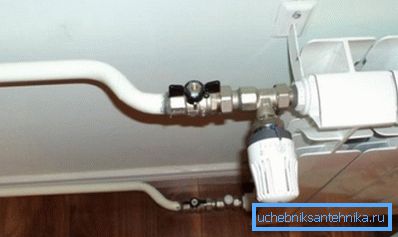
- during installation, they often do not pay attention to this, but the head should be placed horizontally. Firstly, it will not give the bellows, and it is placed in the head, to overheat, and secondly, it will provide convenient access to turn the head;
- it is undesirable for direct sunlight to fall on the head.

As for the installation technology itself, all the work can be done by hand. In fact, it is no more difficult than doing a regular tie-in with a pipe. To ensure the tightness of the connection of the thermostat to the heating pipe, you can use detachable connections, for example, "American".

Summarizing
Not every winter is accompanied by severe frost, so the heating does not always have to work at 100% power. It is uneconomical, and simply creates discomfort in the house.
The use of thermostats will allow you to adjust the heating operation in the house in a wide range of temperatures and will provide not only financial savings, but also comfort in each room. The video clearly shows the principle of the thermostat.